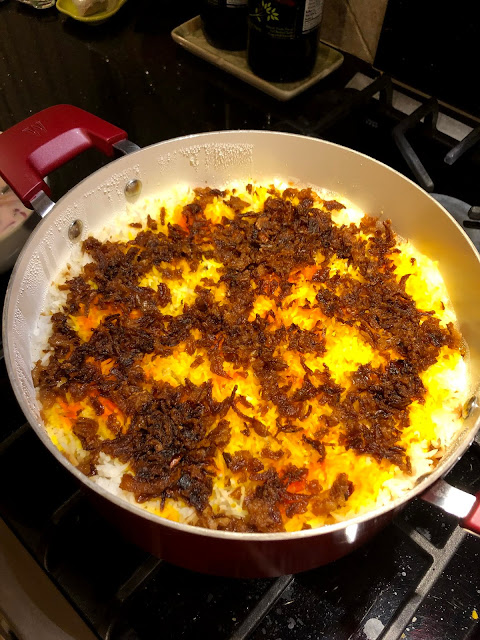Life-Giver #1
On my children's phones, my contact information is saved under Life-Giver #1. I take comfort in the fact that despite their daily acts of defiance, this gesture is an acknowledgement (grudging, perhaps) that they originated from and continue to draw sustenance from me, their Life-Giver. My husband has the dubious distinction of being Life-Giver # 2. Fortunately, he is a very smart man who readily relinquishes the top spot in parenting to me, knowing well that the honor comes with very few perks.
When it comes to food, rice is Life-Giver # 1 in our family. Rice is a staple of Indian food, showing up in various avatars in virtually every course of an Indian meal. It is the holy grain of India that symbolizes prosperity, fertility, and good fortune. Annual festivals herald the rice harvest cycle throughout the country. Rice also plays an integral role in most Hindu religious ceremonies and rituals -- whether it is the baby's first morsel of solid food or the blessing of newly-wed couples. There is such regard for the essential, life-sustaining quality of rice that many people are loathe to waste even a grain, believing that they are inviting bad luck in doing so.
Perhaps it is my deep-seated reverence for rice that led me to purchase a second 25 lb. bag of basmati rice as the fears about Corona virus-related shutdowns started circulating last week. While others stocked up on toilet paper, bottled water, and hand sanitizers, I felt fortified by the fact that I had two 25 lb. bags of rice in my pantry. We all have our priorities.
Not surprisingly, two of the meals I cooked in the past few days were rice-centered. Both Biryani and Khichuri are one-pot meals, but they have completely different flavor profiles and serve different purposes. Biryani is a decadent, multi-layered meat and rice preparation that is infused with aromatics like saffron, nutmeg, and, mace besides a host of other spices. The preparation involves several steps and requires slow cooking over a low flame. A tiny part of me felt guilty as I embarked on preparing this elaborate dish last weekend just as we were becoming aware of implications of the Corona Virus outbreak in the community. The pleading and cajoling got the better of me though, especially when I was reminded that I had not made Biryani in 2020. You see, one expects more from Life-Giver #1. Anyway, the product that emerged at the end of the six-hour process was excellent, fragrant with just a touch of meetha attar, that potent extract that I picked up on our last trip to India.
Khichuri, by contrast, is a humble dish, yet, equally comforting and nourishing. Traditionally, this wholesome vegetarian dish is served as prasad during religious functions. It is also the quintessential rainy day meal in Bengali households. The ease of preparation makes this dish a good choice for feeding large groups or feeding your family when you are short on time and supplies. I threw this version together in under an hour. Besides rice and moong daal, I added fresh carrots and beans to sneak in some vegetables. As sides, we had roasted cauliflower florets (tossed with olive oil, salt & turmeric and baked in a 375 degree oven for 30 minutes) and papads (cooked in the microwave). With a dollop of pure ghee on top, this hit just the right spot.




Intrigued by the 'Meetha Attar' reference..what is it?
ReplyDelete